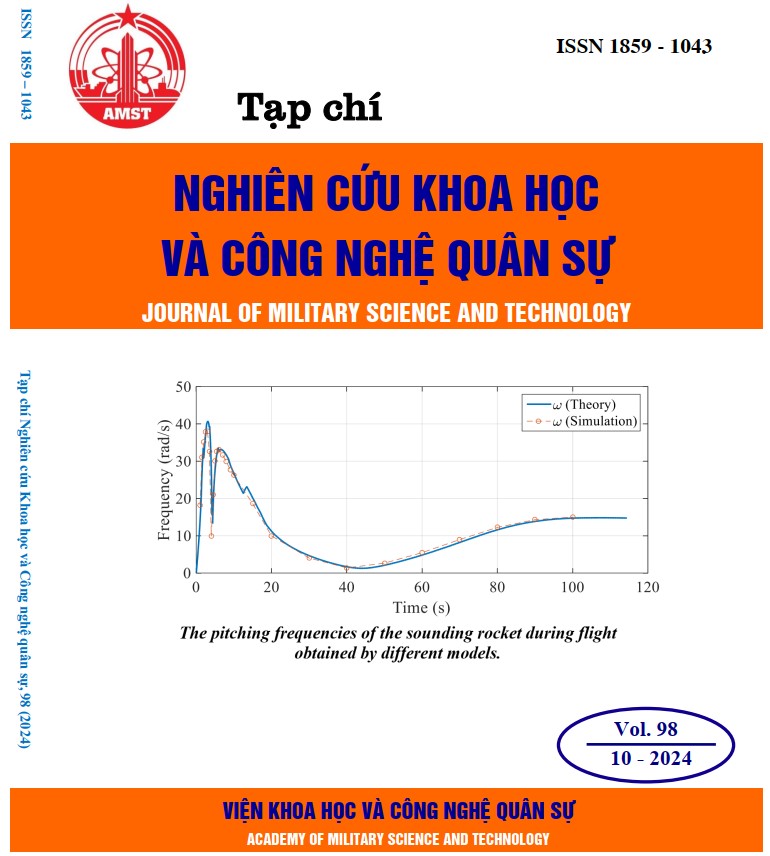Microwave-assisted pyrolysis of plastic waste for liquid oil production
532 viewsDOI:
https://doi.org/10.54939/1859-1043.j.mst.98.2024.78-85Keywords:
Plastic waste; Pyrolysis; Microwave; Oil.Abstract
In this work, the article presents the results of the production of fuel oil from plastic waste using microwave-assisted pyrolysis. Under the influence of microwave power, microwave absorption material, time, catalyst, polyethylene (PE), polypropylene (PP), polystyrene (PS) and mixture (34% PE + 33% PP + 33 wt% PS) were pyrolyzed to liquid oil. The results showed that with 500 g of raw plastic, 500 W microwave power, and 120 minutes, the carbon absorber accounted for 10 wt% (compared to plastic), catalysts accounted for 20 wt%, fuel efficiency reached 84% with PS and PP, 83% with PE, and 83.5% with mixed plastics. The oil obtained qualified the standards of FO No. 1 TCVN 6239:2019. The gas chromatography/mass spectroscopy GC/MS analysis (GC-MS) showed that the composition of the pyrolysis oil is mainly hydrocarbon from C7-C12.
References
[1]. J.N. Hahladakis, “An overview of chemical additives present in plastics: Migration, release, fate and environmental impact during their use”, Disposal and recycling, Vol. 344, 179-199, (2018). DOI: https://doi.org/10.1016/j.jhazmat.2017.10.014
[2]. I. Ahmad, M.I Khan, H. Khan, M. Ishaq, R. Tariq, K. Gul, Pyrolysis study of polypropylene and polyethylene into premium oil products, Int J Green Energy, Vol. 12, 663–671, (2014). DOI: https://doi.org/10.1080/15435075.2014.880146
[3]. P. H. M. Putra, S. Rozali, M. F. A. Pataha, AidaIdris, “A review of microwave pyrolysis as a sustainable plastic waste management technique”, Journal of Environmental Management, Vol. 303, 114240, (2022). DOI: https://doi.org/10.1016/j.jenvman.2021.114240
[4]. S. R. Juliastutia, N. Hendrianie, P. J. Ramadhan, D. H. Satria, “Microwave pyrolysis of multilayer plastic waste (LDPE) using zeolite catalyst”, In AIP Conference Proceedings, Vol. 1840, 110001, (2017). DOI: https://doi.org/10.1063/1.4982331
[5]. A. Undri, L. Rosi, “Efficiency disposal of waste polyolefins through microwave assisted pyrolysis”, Fuel, Vol 116, 662-671, (2014). DOI: https://doi.org/10.1016/j.fuel.2013.08.037
[6]. Khaghanikavkani, E. Farid, Holdem, Williamson, “Microwave pyrolysis of plastic”, Journal of Chemical Engineering & Process Technology, Vol. 3, pp 256-264, (2013). DOI: https://doi.org/10.4172/2157-7048.1000150
[7]. M. H. Cho, S. H Jung, and J. S. Kim, “Pyrolysis of mixed plastic wastes for the recovery of benzene, toluene, and xylene (BTX) aromatics in a fluidized bed and chlorine removal by applying various additives”, Energy Fuels, Vol. 24(2), pp. 1389-1395, (2010). DOI: https://doi.org/10.1021/ef901127v







